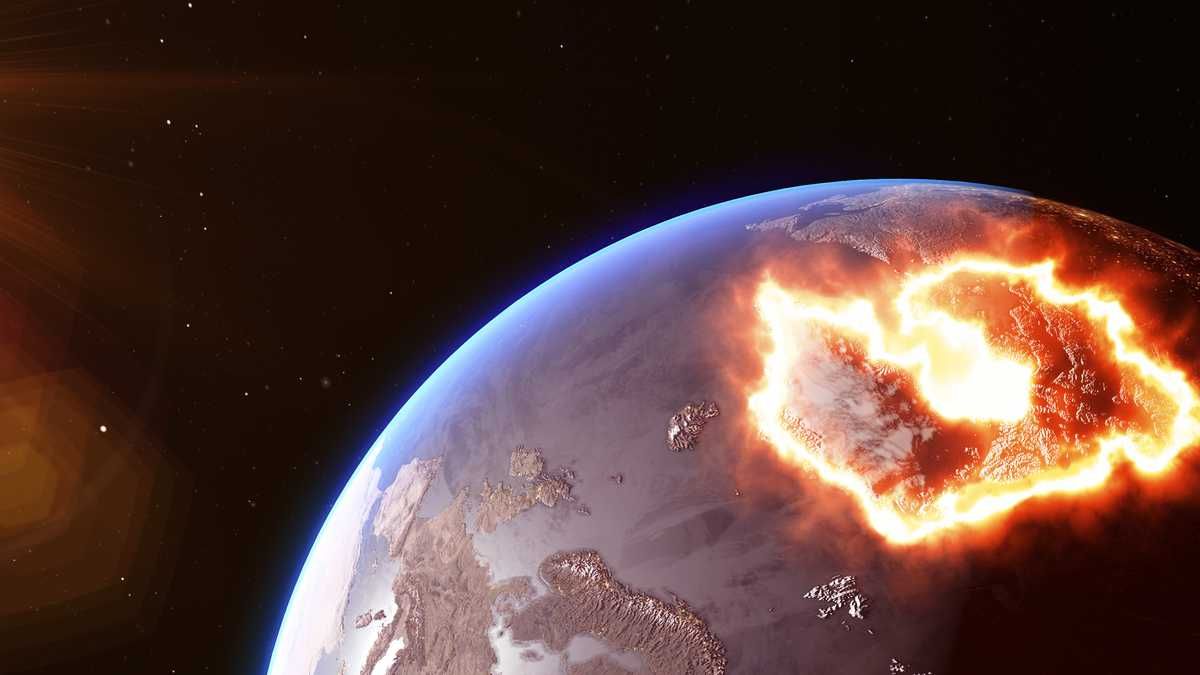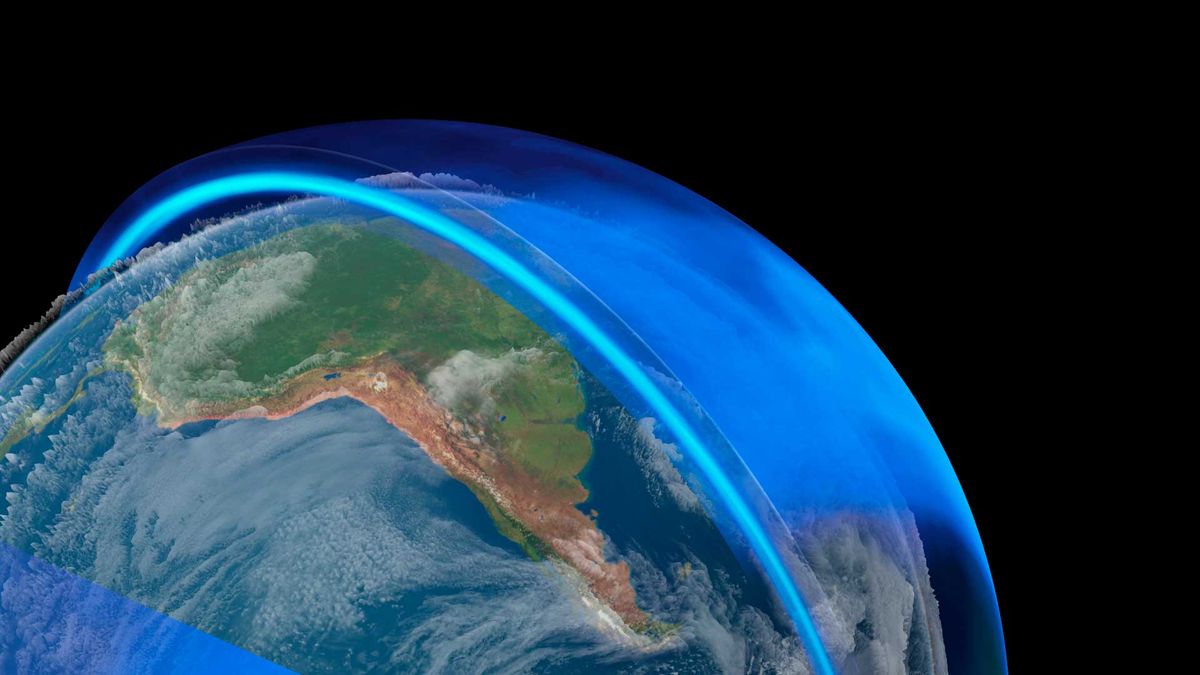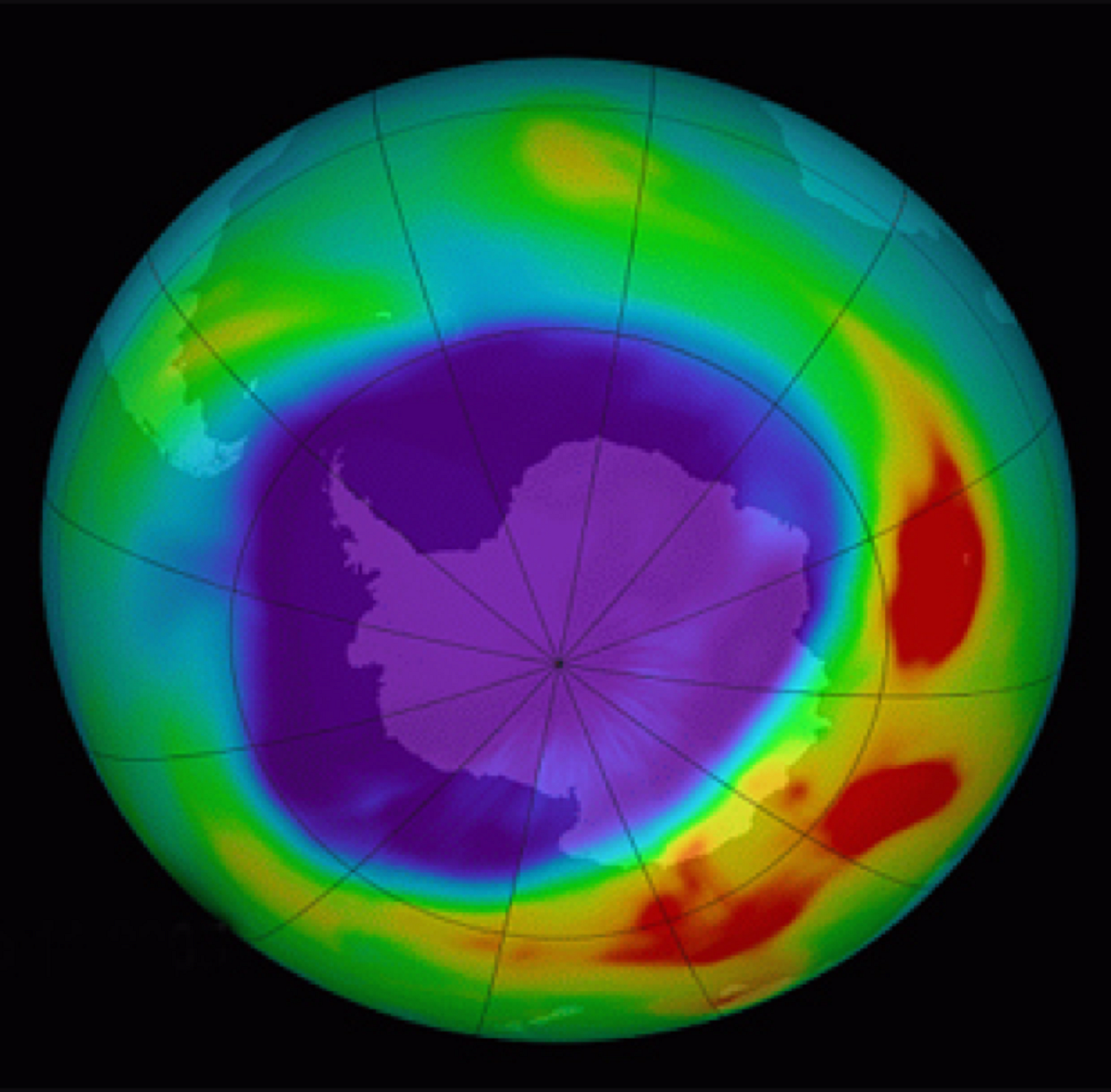
The ozone layer is the treatment area where ozone concentrations are higher than normal. This layer protects us from the sun's harmful UV radiation. However, the release of some chemicals called chlorofluorocarbons has created a hole in the ozone layer. The hole has been known for decades and is shrinking thanks to the Montreal Protocol. many do not know what is the hole in the ozone layer.
For this reason, we are going to dedicate this article to telling you what the hole in the ozone layer is, what its characteristics and consequences are.
protection layer

Let us first understand what the ozone layer is. It is a protective layer located in the stratosphere. This layer acts as a filter for biologically harmful UV radiation from the sun. It could not protect against this ultraviolet radiation in the way that ensures life on Earth as we know it today.
Despite the importance of this layer for survival, humans seem determined to destroy it. Chlorofluorocarbons are chemicals that destroy ozone present in the stratosphere through various reactions. It is a gas composed of fluorine, chlorine and carbon. When the chemical reaches the stratosphere, it undergoes a photolysis reaction with ultraviolet radiation from the sun. This causes the molecules to split and need chlorine atoms. Chlorine reacts with ozone present in the stratosphere causing oxygen atoms to form and break down ozone. In this way, the emission of these chemicals is continuously causing the destruction of the ozone layer.
Also, keep in mind that these chemicals have a long shelf life in the atmosphere. Thanks to the Montreal Protocol, the discharge of these chemicals is completely prohibited. However, to this day, the ozone layer remains damaged. The hole in the ozone layer is improving significantly compared to previous decades. Let's take a deeper look.
What is the hole in the ozone layer

Ozone is found in the stratosphere, at altitudes between 15 and 30 kilometers. This layer is made up of ozone molecules, which in turn are made up of 3 atomic atoms of oxygen. The role of this layer is to absorb UV-B radiation and act as a filter to reduce damage.
Destruction of the ozone layer occurs when a chemical reaction occurs that causes ozone depletion in the stratosphere. The incoming solar radiation is filtered by the ozone layer and the ozone molecules are destroyed by UV-B radiation, and when this happens the ozone molecules break down into oxygen and nitrogen dioxide. This process is called photolysis. This means that the molecules break up under the action of light.
The forms of carbon dioxide and oxygen do not completely dissociate, but rather recombine, again forming ozone. This step does not always occur and is responsible for the hole in the ozone layer. The main reason for the accelerated destruction of the ozone layer is the emission of chlorofluorocarbons. Although we already mentioned that incoming sunlight destroys ozone, it does so in such a way that the balance is neutral. That is, the amount of ozone destroyed by photolysis is equal to or less than the amount of ozone that can be formed by intermolecular association.
This means that the main cause of ozone depletion is the emission of chlorofluorocarbons. The World Meteorological Organization says that the ozone layer will recover around 2050 as a result of the ban on these products. Keep in mind that these are all estimates since, even if these chemicals are no longer used, they remain in the atmosphere for decades.
global consequences

It should be noted that the hole in the ozone layer is located mainly over Antarctica. Although most of the gases that deplete the ozone layer are emitted in developed countries, there is a current that carries these gases to Antarctica. What's more, we must increase the residence time of these gases in the atmosphere and the time they can destroy the ozone.
These gases benefit from the lower temperatures in the southern hemisphere due to the great cycle of the Earth and greatly break down this concentration of ozone. And the lower the temperature, the more serious the layer damage. This causes the drop in ozone concentration to increase in winter and recover in spring.
The deterioration or destruction of the ozone layer can have a variety of consequences. We will analyze what they consist of depending on who is affected.
Consequences for human health
- Skin cancer: It is one of the best known diseases associated with exposure to UV-B radiation. Since the disease does not appear now, but over the years, it is necessary to sunbathe and protect yourself.
- Immune system conditions: It acts on the body to reduce its ability to protect itself from infectious diseases.
- Vision changes: It causes cataracts and presbyopia more frequently.
- Respiratory problems: Some problems are asthma due to increased ozone in the lower atmosphere.
Consequences on terrestrial and marine animals
It has negative effects on all land animals, with similar consequences for humans. As for the marine fauna, this radiation reaches the surface in a way that directly affects the phytoplankton of the ocean. The abundance of these phytoplankton is reduced to the point of affecting the food chain.
effects on plants
The incidence of this ultraviolet radiation, the most harmful, affects the development of plant species, causing changes in their flowering and growth times. All of this can affect the decline of plant and crop populations.
As you can see, although many people do not know what the hole in the ozone layer is, it is something of vital importance for our planet. I hope that with this information you can learn more about what the hole in the ozone layer is and what its characteristics are.